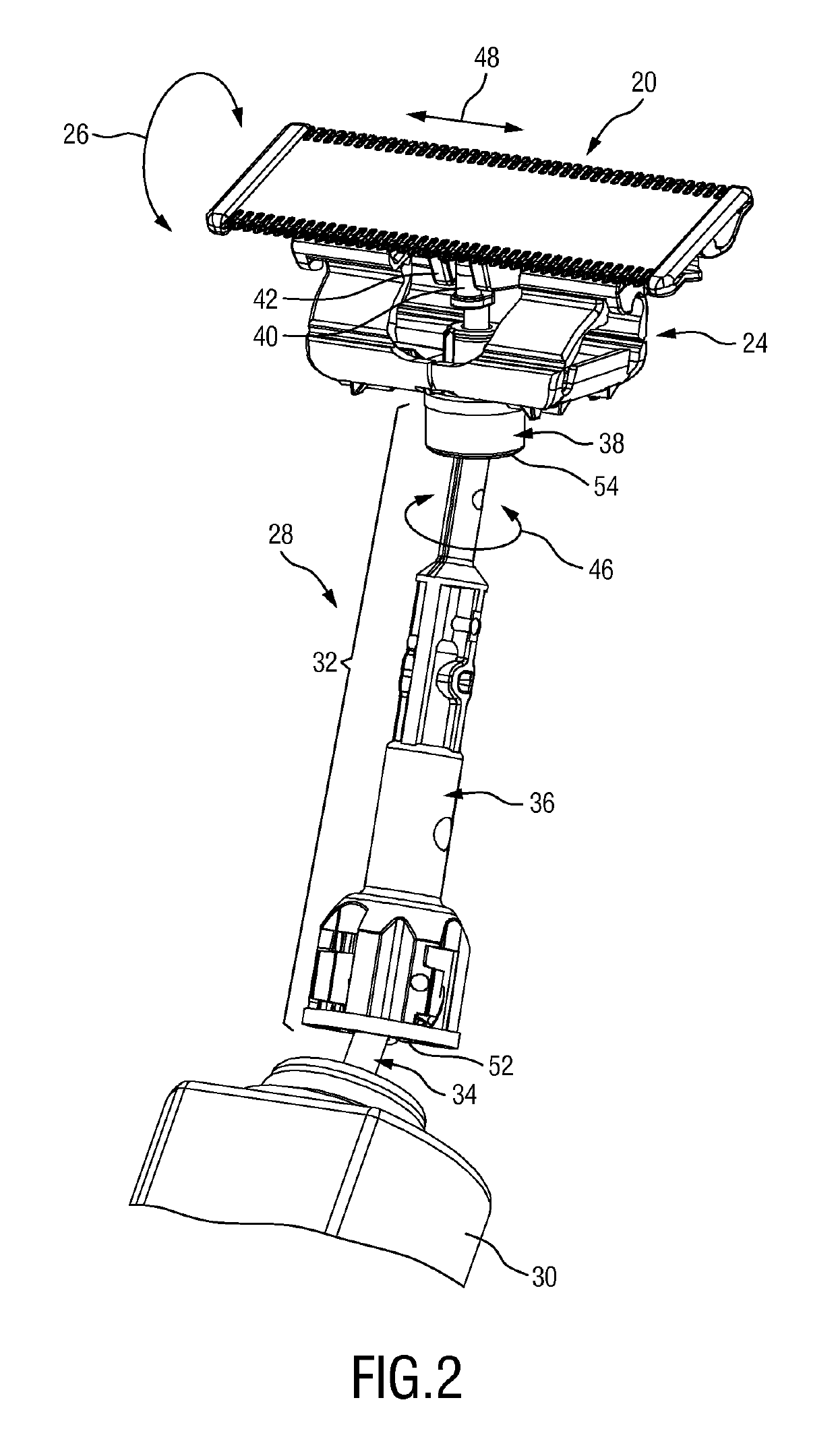Coupling mechanism for a drive train of a hair cutting appliance
a technology of coupling linkage and drive train, which is applied in the direction of metal working apparatus, etc., can solve the problems of increasing noise level, certain risk of heat generation and related wear, and the respective driving joints of the angular offset compensation drive train are prone to wear, so as to improve the operating performance of the appliance, reduce noise and/or vibration, and improve the effect of user experien
- Summary
- Abstract
- Description
- Claims
- Application Information
AI Technical Summary
Benefits of technology
Problems solved by technology
Method used
Image
Examples
Embodiment Construction
[0064]FIG. 1 schematically illustrates a hair cutting appliance 10, particularly an electric hair cutting appliance 10. The hair cutting appliance 10 in accordance with FIG. 1 includes a housing 12 which is arranged to house a motor for driving the hair cutting appliance 10. The housing 12 may further house a battery, for instance a rechargeable battery. However, in some embodiments, the hair cutting appliance 10 may be provided with a power cable for connecting a power supply. A power supply connector may be provided in addition or in the alternative to an (internal) electric battery. The housing 12 may further comprise operator controls, for instance switches, buttons, LEDs, and such like.
[0065]As indicated in FIG. 1 by brackets (reference numerals 14, 16), the housing 12 may comprise a main portion 14 and a neck portion 16. Further, a cutting head 18 is provided which is associated to the neck portion 16, at least in the mounted state. As shown in FIG. 1 in an illustrative, non-l...
PUM
 Login to View More
Login to View More Abstract
Description
Claims
Application Information
 Login to View More
Login to View More - R&D
- Intellectual Property
- Life Sciences
- Materials
- Tech Scout
- Unparalleled Data Quality
- Higher Quality Content
- 60% Fewer Hallucinations
Browse by: Latest US Patents, China's latest patents, Technical Efficacy Thesaurus, Application Domain, Technology Topic, Popular Technical Reports.
© 2025 PatSnap. All rights reserved.Legal|Privacy policy|Modern Slavery Act Transparency Statement|Sitemap|About US| Contact US: help@patsnap.com



